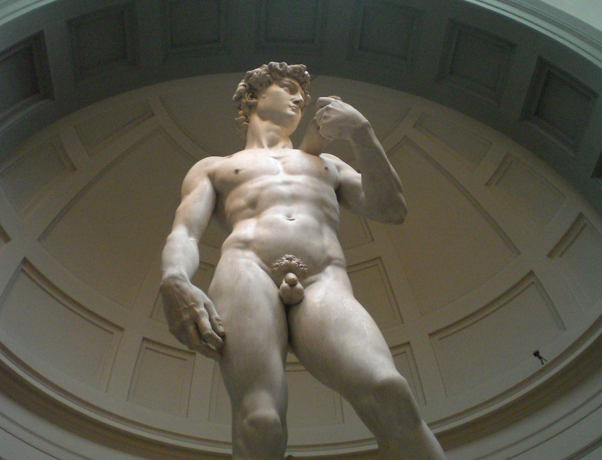In 1873, just after the Unification of Italy, the David was removed from Piazza Signoria and transported to the Accademia Gallery.
In 1873, just after the Unification of Italy, the David was removed from Piazza Signoria and transported to the Accademia Gallery. Later it was replaced by a copy, while a bronze re-production was placed in Piazzale Michelangelo. The new acquistition led to the creation, in the Florentine museum, of a Tribuna where Michelangelo’s masterpiece would be worthly displayed.
The project by the architect Emilio De Fabris – who completed the Tribuna between 1872 and 1882 – provided for a room in the shape of a Latin cross, with a round skylight below which the David was to be placed. In 1875, two years after Michelangelo’s statue had entered the Accademia, the Tribuna (although still unfished) was chosen as the ideal place in which to display the great exhibition of reproductions of the artist’s works which was to celebrate the forth centennial of the artist’s birth. But in the early 20th century, the moulds of Michelangelo’s work left in the museum, surrounding the original David, began to seem inappropriate. It was decided to collect a group of original works by Michelangelo in the Accademia. In 1909 there arrived from other Florentine collections the Captives, until then displayed at the Boboli Gardens in Buontalenti’s Grotta, where they had been placed by Grand Duke Cosimo I, and the Saint Matthew, which had stood in the courtyard of the Fine Arts Academy. Then in the late Thirties came the Pietà from Palestrina which however is not certailny attributed to Michelangelo.










